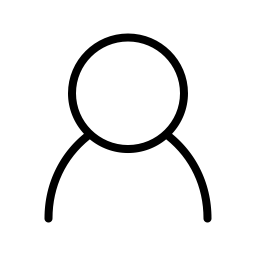Post-Traumatic Stress Disorder: Symptoms and Characteristics


Escrito y verificado por el psicólogo Bernardo Peña
Post-traumatic stress disorder (PTSD) includes the psychological consequences, both immediate and long-term, of traumatic experiences of an extreme or catastrophic nature.
These phenomena have been studied fundamentally in relation to wars. In fact, its symptoms were traditionally known as combat fatigue, shell shock, or war neurosis.
The origin of PTSD
During World War I, which involved trench warfare and hand-to-hand combat, casualties among combatants from this disorder reached 23%. The Vietnam War sparked a great debate in the United States about the aftermath of the psychological traumas of the war, and it has undoubtedly been the most studied phenomenon.
According to some studies, 20 to 30% of veterans of this war had symptoms of PTSD, and 50% experienced at least some symptoms related to combat.
As for the Second World War, a study on the survivors of the Nazi holocaust has obtained that 75% of those interned in concentration camps, 50 years later, continued presenting severe symptoms of PTSD and still showed alterations in the levels of brain catecholamines.
Exposure to severe stress also increases the occurrence of multiple medical illnesses over time. In a sample of 1,399 veterans of the Vietnam War, 20 years after the war, 332 cases had suffered or still suffered from PTSD.
Compared with a control group of veterans of the same war, combatants with PTSD had a higher prevalence of cardiovascular, digestive, muscular, endocrine, nervous system, respiratory, and infectious diseases, etc., and this effect was maintained after controlling for the factors classic risk factors.

The characteristics of post-traumatic stress disorder
This disorder occurs when a person has experienced or witnessed a traumatic event that’s outside the range of normal human experience and that would be very traumatic for almost anyone. The response to these situations is intense fear or hopelessness. Some examples are:
- Deaths
- Threats to their life or the lives of others
- Catastrophes
- Violence
The traumatic event is persistently re-experienced, either by:
-
- Recurring memories (the memories of these events can be very vivid)
- Dreams or nightmares
- Sudden action or the feeling that the event would happen again
- Intense psychological distress or physiological responses when exposed to events that symbolize or recall some aspect of the event
It’s common for individuals with post-traumatic stress disorder to persistently avoid stimuli associated with trauma, as well as to experience a dulling of their general reactivity, as indicated by the following possible symptoms:
- Avoiding thoughts or conversations about the trauma.
- Avoiding activities, places, or people that inspire memories of the trauma.
- The inability to remember an important aspect of the trauma, that is, the presence of psychogenic or dissociative amnesia. For some authors, psychogenic amnesia would be a dissociative form of PTSD.
- A sharp reduction in interest or participation in previously significant activities (in children, this can include the loss of already acquired abilities such as language or toilet training).
- Feelings of detachment or alienation from others.
- Restriction of their emotional life, for example, inability to have feelings of love.
- Feelings of having a shortened future (not finishing school, losing interest in getting married, not hoping to get a job…).
- Persistent symptoms of increased arousal, such as difficulty sleeping, irritability, concentration difficulties, hypervigilance, or an exaggerated startle response.

Also read: Health psychology: definition and characteristics
Specifications
There are specifications for acute PTSD if symptoms last less than three months, chronic PTSD if they last more than three months, and delayed onset when at least six months have elapsed between the traumatic event and the onset of symptoms. PTSD is a disorder with high morbidity, resistance to treatment, and a chronic course.
The core of trauma
The core of this type of trauma lies in the repetitive memory of the traumatic event. This memory is more active, and this conditions the other psychological experiences. These memories are etched in the amygdala, creating an indelible imprint of the event.
The amygdala becomes hyperexcitable and becomes a kind of trigger that’s ready to set off the brain’s alarm at the slightest hint of something resembling the trauma that occurred.
The disorder greatly lowers the alarm threshold in the nervous system, causing defensive responses to everyday situations as if they were real dangers, demonstrating an increased susceptibility to psychological stress in general.
It appears that violent acts of a personal nature, such as rape, robberies, or situations of violence are more harmful than natural disasters, and there are also higher rates of suicide related to them. The reason may be that the victim of this gratuitous violence feels that they have been deliberately chosen, and this undermines their trust in others and in the safety of the interpersonal world, triggering more internal attributions.
You may be interested in: Obsessive Compulsive Disorder (OCD)
Therapy for PTSD
The most effective therapy is avoidance response prevention exposure (live or in the imagination, progressive or total) to the feared situation. In the case of PTSD, this is very difficult due to the very nature of the feared situation, which is associated with a real and certain danger.
Furthermore, the brain changes caused by trauma are so powerful that any reminiscence of the original situation triggers such a strong emotional activation that the panic response can be reinforced as if it were the original situation. It’s difficult to find a situation in which the feared object can be approached with a sense of calm, which makes treatment more difficult.
Relearning in this disorder must take place at the cortical level (specifically prefrontal), as the original fear recorded in the amygdala will never completely disappear. Therefore, it’s the prefrontal cortex that has to actively inhibit the panic response triggered by the amygdala.
Therefore, careful conscious and deliberate recall is essential in PTSD therapy, at least with adults. It’s important for the patient to verbally retell all aspects of the trauma so that the memories are brought under the control of the neocortex, and the elicited reactions are better understood and directed.
Final comments
In conclusion, post-traumatic stress disorder falls within the trauma and stressor disorders described in the DSM-5. Its origin is contact with a traumatic situation threatening the life or integrity of the individual.
This experience generates a trace that’s very difficult to erase in memory. Therefore, cognitive-behavioral therapy is needed to help minimize the emotional impact of the traumatic memory.
Post-traumatic stress disorder (PTSD) includes the psychological consequences, both immediate and long-term, of traumatic experiences of an extreme or catastrophic nature.
These phenomena have been studied fundamentally in relation to wars. In fact, its symptoms were traditionally known as combat fatigue, shell shock, or war neurosis.
The origin of PTSD
During World War I, which involved trench warfare and hand-to-hand combat, casualties among combatants from this disorder reached 23%. The Vietnam War sparked a great debate in the United States about the aftermath of the psychological traumas of the war, and it has undoubtedly been the most studied phenomenon.
According to some studies, 20 to 30% of veterans of this war had symptoms of PTSD, and 50% experienced at least some symptoms related to combat.
As for the Second World War, a study on the survivors of the Nazi holocaust has obtained that 75% of those interned in concentration camps, 50 years later, continued presenting severe symptoms of PTSD and still showed alterations in the levels of brain catecholamines.
Exposure to severe stress also increases the occurrence of multiple medical illnesses over time. In a sample of 1,399 veterans of the Vietnam War, 20 years after the war, 332 cases had suffered or still suffered from PTSD.
Compared with a control group of veterans of the same war, combatants with PTSD had a higher prevalence of cardiovascular, digestive, muscular, endocrine, nervous system, respiratory, and infectious diseases, etc., and this effect was maintained after controlling for the factors classic risk factors.

The characteristics of post-traumatic stress disorder
This disorder occurs when a person has experienced or witnessed a traumatic event that’s outside the range of normal human experience and that would be very traumatic for almost anyone. The response to these situations is intense fear or hopelessness. Some examples are:
- Deaths
- Threats to their life or the lives of others
- Catastrophes
- Violence
The traumatic event is persistently re-experienced, either by:
-
- Recurring memories (the memories of these events can be very vivid)
- Dreams or nightmares
- Sudden action or the feeling that the event would happen again
- Intense psychological distress or physiological responses when exposed to events that symbolize or recall some aspect of the event
It’s common for individuals with post-traumatic stress disorder to persistently avoid stimuli associated with trauma, as well as to experience a dulling of their general reactivity, as indicated by the following possible symptoms:
- Avoiding thoughts or conversations about the trauma.
- Avoiding activities, places, or people that inspire memories of the trauma.
- The inability to remember an important aspect of the trauma, that is, the presence of psychogenic or dissociative amnesia. For some authors, psychogenic amnesia would be a dissociative form of PTSD.
- A sharp reduction in interest or participation in previously significant activities (in children, this can include the loss of already acquired abilities such as language or toilet training).
- Feelings of detachment or alienation from others.
- Restriction of their emotional life, for example, inability to have feelings of love.
- Feelings of having a shortened future (not finishing school, losing interest in getting married, not hoping to get a job…).
- Persistent symptoms of increased arousal, such as difficulty sleeping, irritability, concentration difficulties, hypervigilance, or an exaggerated startle response.

Also read: Health psychology: definition and characteristics
Specifications
There are specifications for acute PTSD if symptoms last less than three months, chronic PTSD if they last more than three months, and delayed onset when at least six months have elapsed between the traumatic event and the onset of symptoms. PTSD is a disorder with high morbidity, resistance to treatment, and a chronic course.
The core of trauma
The core of this type of trauma lies in the repetitive memory of the traumatic event. This memory is more active, and this conditions the other psychological experiences. These memories are etched in the amygdala, creating an indelible imprint of the event.
The amygdala becomes hyperexcitable and becomes a kind of trigger that’s ready to set off the brain’s alarm at the slightest hint of something resembling the trauma that occurred.
The disorder greatly lowers the alarm threshold in the nervous system, causing defensive responses to everyday situations as if they were real dangers, demonstrating an increased susceptibility to psychological stress in general.
It appears that violent acts of a personal nature, such as rape, robberies, or situations of violence are more harmful than natural disasters, and there are also higher rates of suicide related to them. The reason may be that the victim of this gratuitous violence feels that they have been deliberately chosen, and this undermines their trust in others and in the safety of the interpersonal world, triggering more internal attributions.
You may be interested in: Obsessive Compulsive Disorder (OCD)
Therapy for PTSD
The most effective therapy is avoidance response prevention exposure (live or in the imagination, progressive or total) to the feared situation. In the case of PTSD, this is very difficult due to the very nature of the feared situation, which is associated with a real and certain danger.
Furthermore, the brain changes caused by trauma are so powerful that any reminiscence of the original situation triggers such a strong emotional activation that the panic response can be reinforced as if it were the original situation. It’s difficult to find a situation in which the feared object can be approached with a sense of calm, which makes treatment more difficult.
Relearning in this disorder must take place at the cortical level (specifically prefrontal), as the original fear recorded in the amygdala will never completely disappear. Therefore, it’s the prefrontal cortex that has to actively inhibit the panic response triggered by the amygdala.
Therefore, careful conscious and deliberate recall is essential in PTSD therapy, at least with adults. It’s important for the patient to verbally retell all aspects of the trauma so that the memories are brought under the control of the neocortex, and the elicited reactions are better understood and directed.
Final comments
In conclusion, post-traumatic stress disorder falls within the trauma and stressor disorders described in the DSM-5. Its origin is contact with a traumatic situation threatening the life or integrity of the individual.
This experience generates a trace that’s very difficult to erase in memory. Therefore, cognitive-behavioral therapy is needed to help minimize the emotional impact of the traumatic memory.
- Danzi, B. A. A., & La Greca, A. M. (2017). Optimizando el umbral clínico para el TEPT: extendiendo criterios del DSM-5 de preescolares a niños de edad escolar. International Journal of Clinical and Health Psychology, 17(3), 234-241.
- Echeburúa, E., Amor, P. J., Sarasua, B., Zubizarreta, I., Holgado-Tello, F. P., & Muñoz, J. M. (2016). Escala de Gravedad de Síntomas Revisada (EGS-R) del Trastorno de Estrés Postraumático según el DSM-5: propiedades psicométricas. Terapia psicológica, 34(2), 111-128.
- Gómez-Gutiérrez, M., Chaparro-Morillo, G., Martín-de-Francisco, C., & Crespo, M. (2018). Tratamiento cognitivo-conductual de un caso de estrés postraumático por accidente ferroviario.¿ Éxito terapéutico o evitación?. Clínica y Salud, 29(2), 101-104.
Este texto se ofrece únicamente con propósitos informativos y no reemplaza la consulta con un profesional. Ante dudas, consulta a tu especialista.







